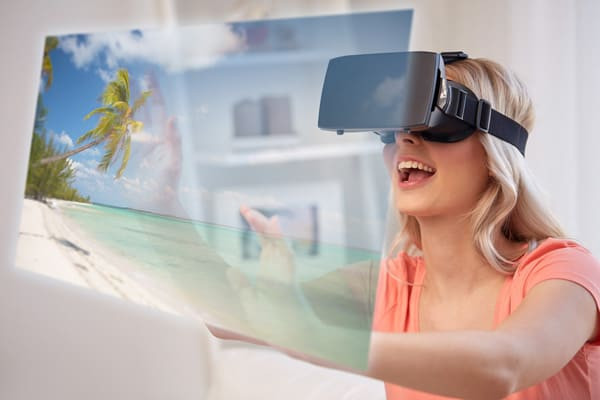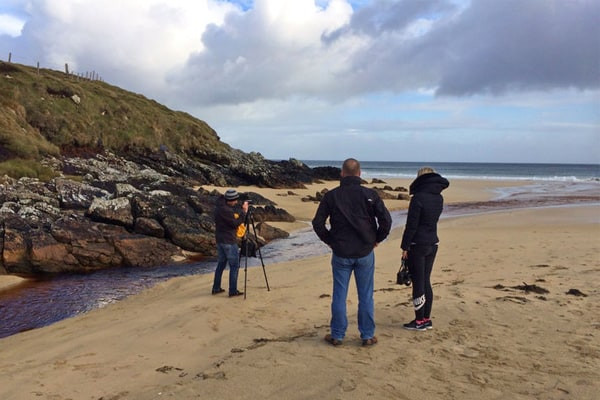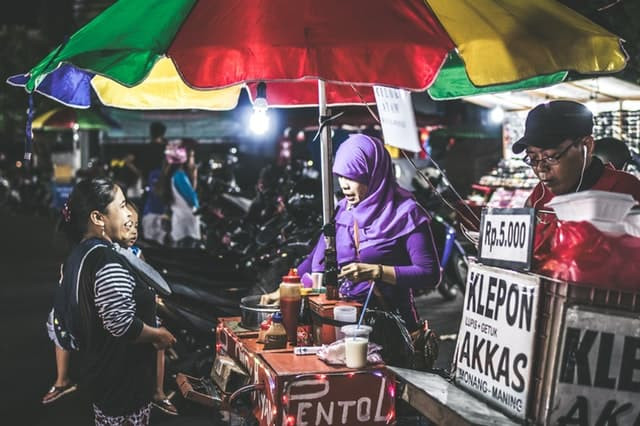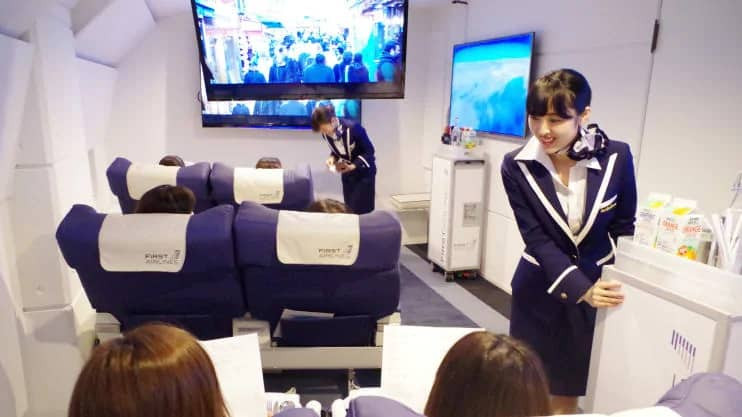Virtual reality tourism is revolutionizing the way we explore the world, offering immersive previews and experiences of destinations like never before. At SIXT.VN, we’re excited to bring you the latest innovations in travel, connecting you with Vietnam’s vibrant culture and stunning landscapes through cutting-edge technology. Discover the potential of virtual tours, immersive travel experiences, and alternative tourism options.
1. What is Virtual Reality Tourism?
Virtual reality (VR) tourism is an innovative way to explore travel destinations through immersive, interactive digital experiences. In essence, virtual reality tourism uses technology to create simulated environments that allow users to experience a location as if they were physically there. This involves using VR headsets, 360-degree videos, and interactive applications that transport individuals to different destinations around the world. VR tourism enhances traditional travel planning, provides accessible tourism options, and creates unique brand engagement.
1.1. Defining Virtual Reality in Travel
Virtual reality in travel recreates destinations with interactive 360-degree images or videos. Unlike regular images or videos, VR captures every part of a location, providing an immersive experience as if you were there. This is achieved using specialized cameras, rigs, and software, allowing viewers to explore destinations on VR headsets or regular devices. This differs from computer-generated imagery (CGI) used in gaming, as it focuses on real-world locations. According to a study by Tourism Australia, almost 20% of consumers have used VR to select a holiday destination.
1.2. Key Components of VR Tourism
Several key components make up virtual reality tourism:
- VR Headsets: Devices that provide an immersive visual and auditory experience, simulating the environment of the destination.
- 360-Degree Videos: Videos captured with special cameras that record in all directions, allowing viewers to look around as if they were there.
- Interactive Applications: Software that allows users to interact with the virtual environment, exploring points of interest and learning about the destination.
- Spatial Audio: Sound design that mimics how sound travels in the real world, enhancing the sense of presence in the virtual environment.
1.3. Evolution of VR Tourism
The evolution of VR tourism has been marked by advancements in technology and increasing accessibility. Early VR experiences were limited by bulky equipment and high costs, but today, more affordable and user-friendly VR headsets and software have made it accessible to a broader audience. The integration of VR with travel planning platforms and marketing strategies has also driven its growth, with travel companies using VR to offer virtual tours and previews of destinations. The future of VR tourism is promising, with potential applications in virtual booking interfaces, enhanced accessibility, and immersive experiences.
2. Why is Virtual Reality Tourism Gaining Popularity?
Virtual reality tourism is gaining popularity due to its ability to provide immersive experiences, convenience, and accessibility that traditional travel methods cannot match. Several factors contribute to its increasing appeal, including technological advancements, changing consumer preferences, and the unique benefits it offers.
2.1. Immersive Experiences
One of the primary reasons for the rise in popularity of VR tourism is its ability to provide immersive experiences. VR headsets and 360-degree videos create a sense of presence, making users feel like they are physically present at the destination. This immersion is achieved through high-resolution visuals, spatial audio, and interactive elements that engage multiple senses.
 Tourist Using VR Headset
Tourist Using VR Headset
2.2. Convenience and Accessibility
VR tourism offers unparalleled convenience and accessibility, allowing users to explore destinations from the comfort of their homes. This is particularly appealing to individuals who may have physical limitations, time constraints, or financial barriers that prevent them from traveling. VR tourism eliminates the need for travel arrangements, such as flights and accommodations, making it an accessible option for a wider audience.
2.3. Cost-Effectiveness
Compared to traditional travel, VR tourism can be a cost-effective alternative. While VR headsets and equipment may require an initial investment, the overall cost is significantly lower than that of a physical trip. VR tourism eliminates expenses such as transportation, lodging, meals, and activities, making it an affordable option for budget-conscious travelers.
2.4. Risk-Free Exploration
VR tourism allows users to explore destinations risk-free, without the potential dangers or inconveniences associated with physical travel. This is particularly appealing for exploring remote or hazardous locations, where traditional travel may be difficult or unsafe. VR tourism also eliminates concerns about travel-related risks such as health issues, safety hazards, and political instability.
2.5. Previewing Destinations
VR tourism serves as an excellent tool for previewing destinations before making travel plans. By experiencing a destination in VR, users can get a sense of its atmosphere, attractions, and overall appeal, helping them make informed decisions about their travel plans. This is particularly useful for travelers who are unsure about where to go or what to see, as VR tourism allows them to explore multiple destinations before committing to a trip.
3. How Does Virtual Reality Tourism Work?
Virtual reality tourism works through a combination of hardware and software technologies that create immersive and interactive experiences. Understanding the process involves examining the equipment used, the content creation methods, and the ways users interact with the virtual environment.
3.1. Hardware Requirements
The hardware requirements for VR tourism include:
- VR Headsets: These are essential for providing the immersive visual experience. Popular options include Oculus Rift, HTC Vive, and PlayStation VR.
- Computers or Smartphones: High-performance computers or smartphones are needed to run the VR software and display the virtual environment.
- Controllers: Handheld controllers allow users to interact with the virtual environment, such as navigating through the destination or selecting points of interest.
- Headphones: Headphones or earbuds provide spatial audio, enhancing the sense of presence in the virtual environment.
3.2. Content Creation
The creation of VR tourism content involves capturing and processing real-world environments using specialized equipment and techniques.
- 360-Degree Cameras: These cameras capture footage in all directions, creating immersive videos that can be viewed in VR headsets.
- Photogrammetry: This technique involves creating 3D models of real-world objects and environments using photographs.
- 3D Scanning: 3D scanners capture the geometry and texture of objects and environments, allowing for the creation of detailed virtual models.
- Post-Processing: After capturing the footage or models, post-processing is used to enhance the visual quality, add interactive elements, and optimize the content for VR headsets.
 Capturing VR content
Capturing VR content
3.3. Software Platforms
Several software platforms are used for creating and delivering VR tourism experiences:
- Unity: A popular game engine that allows developers to create interactive VR environments and experiences.
- Unreal Engine: Another powerful game engine used for creating high-quality VR content with realistic graphics and physics.
- VR Tour Software: Specialized software for creating virtual tours of real-world locations, with features such as interactive maps, points of interest, and multimedia integration.
- WebVR: A web-based platform that allows users to experience VR content directly in their web browser, without the need for specialized software or hardware.
3.4. User Interaction
User interaction in VR tourism involves navigating through the virtual environment and interacting with its elements. This is typically done using VR headsets, controllers, and spatial audio. Users can move around the destination, explore points of interest, view multimedia content, and interact with virtual objects or characters.
4. Applications of Virtual Reality in Tourism
Virtual reality in tourism has diverse applications, enhancing various aspects of the travel industry and providing unique experiences for travelers. These applications range from marketing and destination previews to virtual tours and accessible tourism options.
4.1. Destination Marketing
VR tourism is an effective tool for destination marketing, allowing tourism boards and travel companies to showcase destinations in an immersive and engaging way. By providing virtual tours and previews of attractions, VR tourism can inspire travelers to visit a destination and generate interest in its unique features.
4.2. Virtual Tours of Landmarks
Virtual tours of landmarks and historical sites offer a convenient and accessible way for people to explore cultural heritage without the need for physical travel. These tours can provide detailed information about the history, architecture, and significance of the landmarks, enhancing the educational and cultural experience.
4.3. Hotel and Accommodation Previews
Hotels and accommodations can use VR to provide potential guests with virtual tours of their facilities, allowing them to preview rooms, amenities, and common areas before booking. This can help guests make informed decisions about their accommodations and increase satisfaction with their stay.
4.4. Enhancing Travel Planning
VR tourism can enhance travel planning by allowing travelers to explore destinations and attractions before making reservations or purchasing tickets. By experiencing a destination in VR, travelers can get a sense of its atmosphere, accessibility, and suitability for their needs, helping them create personalized itineraries and avoid disappointment.
4.5. Accessible Tourism
VR tourism offers accessible tourism options for individuals with disabilities, mobility issues, or other limitations that prevent them from traveling. By providing virtual access to destinations and attractions, VR tourism can enable people with disabilities to experience the world and participate in cultural and recreational activities.
5. Benefits of Virtual Reality Tourism
The benefits of virtual reality tourism extend to both travelers and the tourism industry, offering unique opportunities for exploration, marketing, and accessibility.
5.1. Enhanced Travel Planning
VR tourism significantly enhances travel planning by providing potential travelers with an immersive preview of destinations. This allows them to make informed decisions about their travel plans, ensuring that their expectations align with the reality of the destination. According to research, almost 50% of people would use VR as a tool for choosing their holiday destination if it were free.
5.2. Cost Savings
VR tourism offers significant cost savings compared to traditional travel. By eliminating the need for transportation, accommodation, and other travel-related expenses, VR tourism provides an affordable alternative for exploring destinations around the world.
5.3. Accessibility for All
VR tourism makes travel accessible to individuals who may not be able to travel due to physical limitations, financial constraints, or time constraints. This includes people with disabilities, elderly individuals, and those who are unable to take time off from work or other commitments.
5.4. Sustainable Tourism
VR tourism promotes sustainable tourism by reducing the environmental impact associated with traditional travel. By allowing people to explore destinations virtually, VR tourism can help reduce carbon emissions, minimize damage to fragile ecosystems, and alleviate overcrowding at popular tourist sites.
 Grand Canyon VR experience
Grand Canyon VR experience
5.5. Educational Opportunities
VR tourism provides educational opportunities for people of all ages, allowing them to learn about different cultures, historical sites, and natural wonders from the comfort of their homes. Virtual tours and interactive experiences can enhance the learning process, making it more engaging and memorable.
6. Challenges of Virtual Reality Tourism
Despite its many benefits, virtual reality tourism also faces several challenges that need to be addressed to ensure its widespread adoption and success.
6.1. Technological Limitations
One of the primary challenges of VR tourism is the technological limitations of current VR headsets and software. Issues such as low resolution, limited field of view, and motion sickness can detract from the immersive experience and make it difficult for users to fully engage with the virtual environment.
6.2. Cost of Equipment
The cost of VR headsets and other equipment can be a barrier to entry for many potential users. While VR technology has become more affordable in recent years, high-end headsets and accessories can still be expensive, limiting accessibility for budget-conscious travelers.
6.3. Lack of Sensory Experience
VR tourism is limited by the lack of sensory experiences, such as the ability to smell, taste, and touch the environment. While VR can simulate visual and auditory stimuli, it cannot replicate the full range of sensory experiences associated with physical travel, such as the smell of the ocean, the taste of local cuisine, or the feel of sand between your toes.
6.4. Limited Interactivity
Current VR tourism experiences often lack the level of interactivity and engagement that travelers expect from physical travel. While users can explore destinations and view multimedia content, they may not be able to interact with the environment in meaningful ways, such as talking to locals, participating in activities, or making spontaneous discoveries.
6.5. Dependence on Technology
VR tourism is heavily dependent on technology, which can be unreliable and prone to technical issues. Problems such as software glitches, hardware malfunctions, and internet connectivity issues can disrupt the VR experience and frustrate users.
7. Future Trends in Virtual Reality Tourism
The future of virtual reality tourism holds exciting possibilities as technology advances and new applications emerge. Several trends are expected to shape the development of VR tourism in the coming years.
7.1. Enhanced Sensory Experiences
One of the key trends in VR tourism is the development of enhanced sensory experiences that go beyond visual and auditory stimuli. This includes the integration of haptic technology, which allows users to feel textures and sensations in the virtual environment, as well as the incorporation of scent technology, which can simulate the smell of local cuisine or natural environments.
7.2. Integration with AI and Machine Learning
The integration of AI and machine learning technologies can enhance VR tourism experiences by providing personalized recommendations, adaptive content, and intelligent virtual assistants. AI-powered VR tours can adapt to the user’s interests and preferences, providing customized information and suggestions based on their behavior and feedback.
7.3. Social VR Tourism
Social VR tourism allows multiple users to explore destinations together in a shared virtual environment. This enables friends, families, and other groups to experience VR tourism together, sharing their impressions and interacting with each other in real-time.
7.4. VR Booking Interfaces
Virtual booking interfaces allow users to book their travel arrangements directly within the VR environment. This includes everything from choosing flights and hotels to purchasing tickets and making reservations, all within the immersive VR experience.
 Virtual booking interface
Virtual booking interface
7.5. Increased Accessibility
VR tourism will continue to become more accessible to a wider audience as VR technology becomes more affordable and user-friendly. This includes the development of lightweight, portable VR headsets, as well as the creation of VR content that is optimized for a variety of devices and platforms.
8. Examples of Successful VR Tourism Initiatives
Several successful VR tourism initiatives have demonstrated the potential of VR to enhance travel experiences, promote destinations, and provide accessible tourism options.
8.1. Tourism Australia’s VR Campaign
Tourism Australia launched a VR campaign that allowed potential visitors to experience the country’s stunning landscapes and attractions from the comfort of their homes. The campaign featured 360-degree videos of iconic destinations such as the Great Barrier Reef, Uluru, and Sydney Opera House, providing viewers with an immersive preview of what Australia has to offer.
8.2. Google Arts & Culture VR Tours
Google Arts & Culture offers VR tours of museums, historical sites, and cultural landmarks around the world. These tours provide detailed information about the history, art, and architecture of each site, allowing users to explore cultural heritage from the comfort of their homes.
8.3. First Airlines Virtual Flight Experience
First Airlines, a Tokyo-based company, offers a virtual flight experience that simulates the journey to a destination using VR headsets and immersive environments. Passengers board a replica of an airplane cabin, receive pre-flight safety demonstrations, and enjoy gourmet food while experiencing a virtual tour of the destination.
8.4. Thomas Cook’s VR Travel Experiences
Thomas Cook, a British travel company, offered VR travel experiences in their retail stores, allowing customers to explore destinations such as New York City and Singapore before booking their trips. The VR experiences helped customers make informed decisions about their travel plans and generated excitement about their upcoming adventures.
9. Getting Started with Virtual Reality Tourism
Getting started with virtual reality tourism is easy and accessible, with a variety of options available for experiencing VR travel from the comfort of your home or at a local travel agency.
9.1. Choosing the Right VR Headset
The first step in getting started with VR tourism is choosing the right VR headset. Several options are available, ranging from affordable smartphone-based headsets to high-end PC-based headsets. Consider your budget, the types of VR experiences you’re interested in, and the compatibility of the headset with your devices when making your decision.
9.2. Finding VR Tourism Content
Once you have a VR headset, you can start exploring VR tourism content through a variety of sources. This includes VR travel apps, 360-degree videos on YouTube, and virtual tours on travel websites. Look for content that showcases destinations you’re interested in and provides immersive, interactive experiences.
9.3. Experiencing VR Tourism at Home
You can experience VR tourism from the comfort of your home by using your VR headset, a compatible device, and a stable internet connection. Find a comfortable and safe space to explore VR destinations, and make sure to take breaks to avoid motion sickness or eye strain.
9.4. Visiting VR Travel Agencies
Some travel agencies offer VR travel experiences in their retail stores, allowing customers to explore destinations before booking their trips. Visit a local VR travel agency to experience VR tourism firsthand and get expert advice on planning your next adventure.
10. SIXT.VN and the Future of Travel in Vietnam
SIXT.VN is at the forefront of transforming travel experiences in Vietnam, embracing virtual reality to enhance how travelers plan and enjoy their journeys. By leveraging VR technology, SIXT.VN aims to provide immersive previews of Vietnam’s stunning landscapes, bustling cities, and rich cultural heritage, making travel planning more engaging and informed.
10.1. Integrating VR into Travel Planning
SIXT.VN plans to integrate VR technology into its travel planning platform, allowing customers to explore destinations in Vietnam before booking their trips. This includes virtual tours of popular attractions such as Ha Long Bay, Hoi An Ancient Town, and the Mekong Delta, as well as virtual previews of hotels, resorts, and transportation options.
10.2. Showcasing Vietnam’s Destinations
SIXT.VN aims to showcase Vietnam’s diverse destinations through VR, providing travelers with a comprehensive overview of the country’s cultural and natural wonders. This includes 360-degree videos of iconic landmarks, interactive maps of cities and regions, and immersive experiences of local festivals and events.
10.3. Enhancing Customer Experience
By integrating VR into its services, SIXT.VN seeks to enhance the overall customer experience, making travel planning more enjoyable, informative, and convenient. This includes personalized recommendations based on customers’ interests and preferences, as well as virtual support and assistance throughout the travel planning process.
10.4. Driving Sustainable Tourism
SIXT.VN is committed to promoting sustainable tourism in Vietnam, and VR technology can play a key role in achieving this goal. By providing virtual access to destinations, SIXT.VN can help reduce the environmental impact of tourism, alleviate overcrowding at popular sites, and promote responsible travel practices.
Virtual reality tourism represents a transformative shift in the travel industry, offering unparalleled opportunities for exploration, marketing, and accessibility. As technology continues to advance, VR tourism is poised to become an integral part of the travel experience, enhancing how people plan, explore, and enjoy destinations around the world. With SIXT.VN’s commitment to innovation and customer satisfaction, travelers can expect to see even more exciting developments in VR tourism in the years to come.
Ready to explore Vietnam in a whole new way? Contact SIXT.VN today to learn more about our VR travel options and start planning your virtual adventure!
Address: 260 Cau Giay, Hanoi, Vietnam
Hotline/Whatsapp: +84 986 244 358
Website: SIXT.VN
FAQ About Virtual Reality Tourism
1. What is virtual reality tourism?
Virtual reality tourism uses technology to create immersive, interactive digital experiences that allow users to explore destinations as if they were physically there.
2. How does virtual reality tourism work?
VR tourism uses VR headsets, 360-degree videos, and interactive applications to simulate the environment of a destination, providing users with a sense of presence and immersion.
3. What are the benefits of virtual reality tourism?
Benefits include enhanced travel planning, cost savings, accessibility for all, sustainable tourism, and educational opportunities.
4. What equipment is needed for virtual reality tourism?
Required equipment includes a VR headset, a high-performance computer or smartphone, controllers, and headphones.
5. What are some examples of successful VR tourism initiatives?
Examples include Tourism Australia’s VR campaign, Google Arts & Culture VR tours, and First Airlines’ virtual flight experience.
6. How can I get started with virtual reality tourism?
You can get started by choosing a VR headset, finding VR tourism content through apps and websites, and experiencing VR tourism at home or at a VR travel agency.
7. What are some of the challenges of virtual reality tourism?
Challenges include technological limitations, the cost of equipment, the lack of sensory experiences, limited interactivity, and dependence on technology.
8. How will AI enhance virtual reality tourism?
AI integration will provide personalized recommendations, adaptive content, and intelligent virtual assistants for a more customized experience.
9. What is social VR tourism?
Social VR tourism allows multiple users to explore destinations together in a shared virtual environment, enhancing the sense of community and shared experience.
10. How can SIXT.VN enhance my travel experience with VR?
SIXT.VN integrates VR technology to offer virtual tours of Vietnamese destinations, enhance customer experience, and promote sustainable tourism practices.



